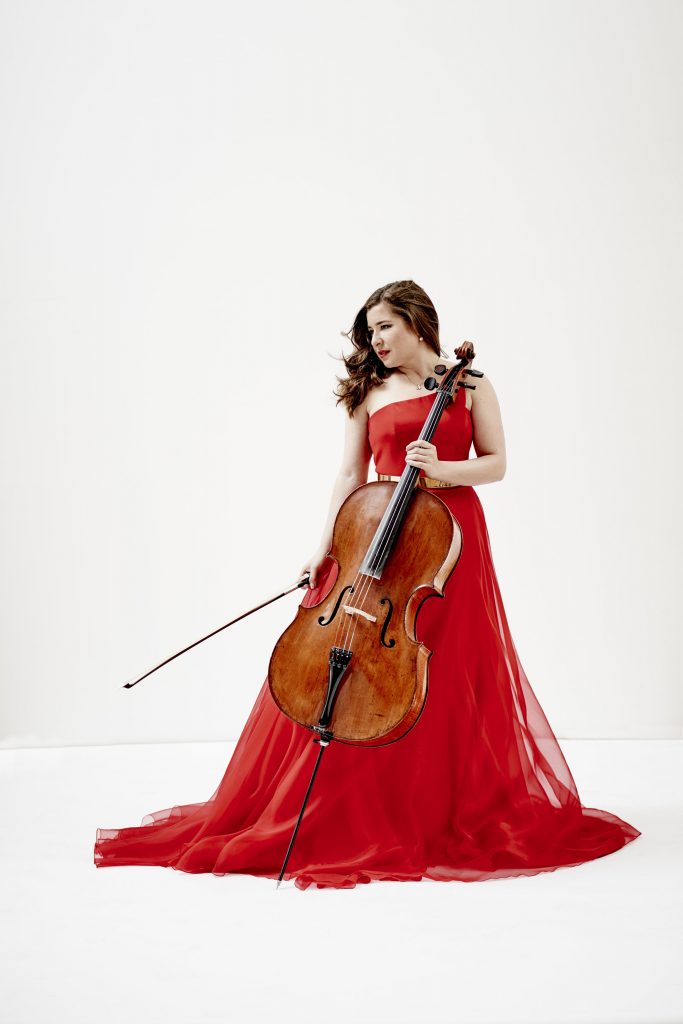Weilerstein and Payare Offer Memorable Accounts of Bloch and Strauss
This week has proven a banner week for appreciating the artistry of cellist Alisa Weilerstein and hearing the music of J. S. Bach. On Tuesday at The Conrad, Weilerstein gave a truly sublime account of three of the Bach Suites for Unaccompanied Cello, and Friday, November 15, Weilerstein provided riveting solos with the San Diego Symphony in Ernest Bloch’s Schelomo, Hebraic Rhapsody for Cello and Orchestra and Richard Strauss’s Don Quixote. Complementing these bravura late Romantic showpieces, Music Director Rafael Payare led the orchestra in J. S. Bach’s Orchestral Suite in D Major, BWV 1069, and Anton Weber’s orchestration of Bach’s Ricercar No. 2 from his Musical Offering, BWV 1079.

Alisa Weilerstein [photo (c.) Paul Stewart]
Why Ernest Bloch’s marvelous Schelomo is not programmed more frequently is a mystery. The rich, multi-hued orchestral score rewards the audience with tumultuous climaxes and rousing brass fanfares, while the cello soloist produces sumptuous lines filled with that modal harmonic palette the 19th century called oriental allure. Yet the work’s probing, philosophical tenor offers much more than the breezy Scheherazade, that frequently programmed gem of period orientalism.
Payare commanded Bloch’s dramatic sweep and gave rewarding shape to the work’s powerful surges as well as to its dark, reflective ruminations. Weilerstein’s glowing legato and glorious, resonant deep tone unleashed the composer’s rhapsodic themes with unrelenting conviction and insight.
Richard Strauss’s grand orchestral tone poem Don Quixote, Op. 35, vividly recounts the adventures of Cervantes’ chivalrous but delusional knight and his accomplice Sancho Panza, with the solo cello representing the knight and the solo viola his squire. Unlike a typical cello concerto, where the orchestra pulls back to allow the soloist to take center stage, Strauss frequently has the cello playing propulsive themes with the orchestra sounding full force.
Undaunted—indeed rising confidently to this challenge—Weilerstein gave a vivid, richly detailed account of Strauss’s knight, and San Diego Symphony Principal Viola Chi-Yuan Chen complemented her artistry with an equally persuasive account of the knight’s trusty squire. In Strauss’s third variation on the Don Quixote theme, where the composer sets up a splendid musical dialogue between the two characters, Weilerstein supplied unending eloquent, fluid lines, while Chen crafted sprightly, slightly edgy responses, each soloist capturing their character’s essential quality. And in the fifth variation, who could not savor Weilerstein’s ardently imploring phrases that conjured the knight’s beloved Dulcinea, only to be jostled into the reality of the full orchestra’s rowdy burlesque in the next variation that describes the burly peasant, his actual Dulcinea.
As he did so adroitly in the Bloch, Payare led the orchestra through this complex score with clarity and insight, revealing his ability to distinguish power from bombast, and always choosing the former. Weilerstein communicated a rewarding sense of fulfillment as she played Don Quixote’s demise at the end of the tone poem, and Payare’s shimmering orchestral postlude confirmed this transcendent performance of the work.
Considering the challenge of preparing these two extended works with cello solo—most conductors would have easily settled for one or the other—it was not surprising that Bach’s Orchestral Suite No. 4 in D Major sounded under rehearsed. The orchestra was not ready to handle Payare’s bristling tempo for the two Bourée’s, but by the time the more relaxed Menuet rolled around, they found their focus. The three trumpets in the outer movements delivered Bach’s virtuoso writing with laudable confidence, but Payare should have toned them down to better balance his strings. The natural trumpets of Bach’s day did not have the brilliance of modern valve trumpets, so less would have truly been more from this trumpet section.
Members of the Second Viennese School, the gurus of 12-tone music, loved the music of J. S. Bach, and it was a treat to hear Anton Weber’s idiosyncratic arrangement of the Second Ricercar from Bach’s Art of Fugue on a symphony concert. Webern gave widely contrasting instruments a few notes of every theme, which results in a constantly changing tapestry of colors and articulations. My only question was whether Payare was leading a serious or a playful reading of the score—or perhaps it was a sly combination of both?
This concert was presented by the San Diego Symphony on November 15, 2019, at the Jacobs Music Center’s Copley Symphony Hall and will be repeated on November 17 in the same venue.



Another triumphant concert! The Bloch and Strauss were astounding…and the energy was profound in Don Quixote’s final notes.